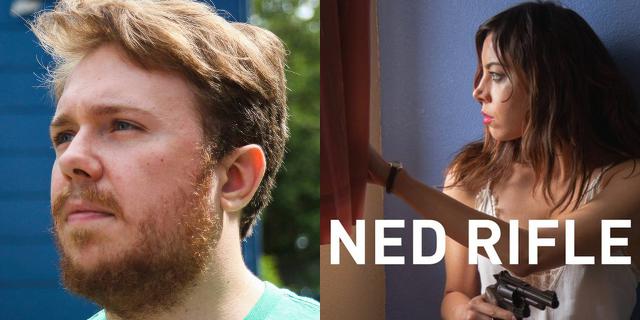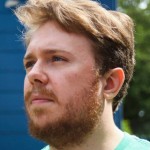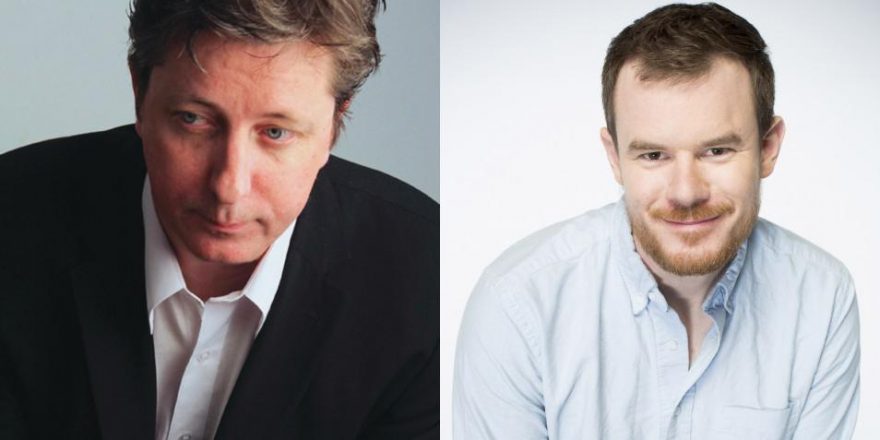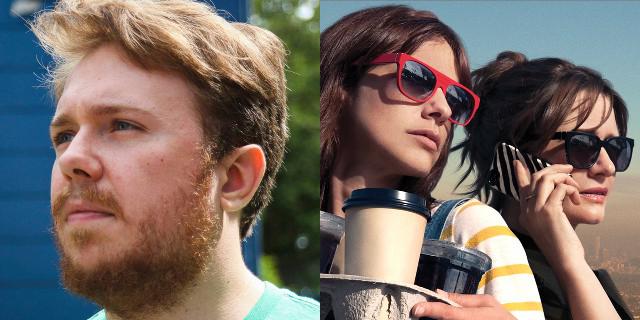I’m 26. My generation of cinephiles and filmmakers began its maturation in the mid-2000s. Unfortunately, this means that many of my contemporaries are mostly (if not totally) unacquainted with the work of Hal Hartley. Hartley is, for me, one of the 10 or so best American filmmakers of the past 25 years — an estimation founded upon his late-1980s and 1990s masterworks, including The Unbelievable Truth (1989), Trust (1990), Simple Men (1992), the short Surviving Desire (1993), Amateur (1994) and Henry Fool (1997). Though he has been steadily producing interesting films since folks my age have been serious about cinema (features and shorts of all sorts), his last high-profile splash, so to speak, was a double dose of peculiar, Dutch-angled genre films: The Girl from Monday (2005) and Fay Grim (2006).
Both those films screened at important festivals (Sundance, Toronto, Berlin), but their critical reception was generally negative and they weren’t widely seen. Awareness of Hartley as a great American auteur diminished from its Henry Fool-era peak. Cinephiles of my generation simply weren’t hearing about Hartley’s work to the same degree as that of his contemporaries, and the issue of viewership has been compounded because for years several of his works were out of print on DVD or only occasionally available for streaming. In the past couple of years, this problem has been steadily resolved. The Unbelievable Truth and Trust have been reissued on disc. A bevy of Hartley’s shorts, as well as a few features, can be seen on Fandor. And now Hartley’s brand-spanking-new website has made harder-to-find titles like Simple Men and Amateur available via Vimeo On Demand.
The point of this preamble is that I have high hopes that the under-appreciation of Hartley’s work amongst my peers (and within current film culture generally) could change in the wake of his new film, Ned Rifle. The release of Ned Rifle has already prompted an upcoming Hartley retrospective at L.A.’s The Cinefamily theater, as well as a smattering of screenings of Hal’s previous work in various North American cities. Momentum is gathering for Hartley to regain the attention and the audience he had in the 1990s. The timing is perfect because, to my eyes and ears, Ned Rifle is Hartley’s best film since Henry Fool.
The film is the third and final work in a trilogy that includes Henry Fool and Fay Grim. The titular Ned (Liam Aiken) is the son of the titular Henry (Thomas Jay Ryan) and the titular Fay (Parker Posey). Henry, Ned’s father, is a complicated, Mephistophelian asshole. He fancies himself a literary genius, but is also a scoundrel and an international criminal. In the first film, Henry mentors Fay’s brother, Simon Grim (James Urbaniak), leading Simon to literary fame and fortune while also seducing, knocking up and marrying the sexually insatiable Fay. In the second film, a long-abandoned Fay becomes embroiled in international intrigue after the CIA urges her to retrieve Henry’s journals in Europe — documents with potential national-security implications. A cog in an absurd machine, Fay ends up in prison, her life wrecked, due to Henry. Their child, Ned, is left an orphan. Ned Rifle catches up with its young protagonist just as he is set to leave witness protection and the adoptive Christian family that’s raised him. Ned is chaste, devoutly religious and hell-bent on exacting murderous revenge upon Henry for the pain he caused Fay. Along the way, he encounters Susan (Aubrey Plaza), a bizarre graduate student who studies Simon Grim’s poetry and has a mysterious obsession with Henry. As Ned and Susan hurtle toward their respective confrontations with Henry, a strange bond forms between them.
Ned Rifle is propelled by Hartley’s distinct sense of rhythm. Typically, we think of rhythm as primarily determined by editing. In Ned Rifle, however, rhythm is primarily a braid of gesture, movement, and dialogue (along with excellent cutting by Kyle Gilman), always geared toward expressive ends. Rhythm in Hartley’s work is, more saliently than in almost any other films, a constructive collaboration between the director and his actors, many of them Hartley regulars (Aiken, Ryan, Posey, Urbaniak, Bill Sage, Martin Donovan, Robert John Burke and Karen Sillas). All of these actors deftly weave themselves into Hartley’s distinctly formal vision. Their command over their physical instruments is frequently awe-inspiring. The coordination of one actor’s placing of his hands on his hips with another actor sighing and turning can transform an otherwise minor moment into something exhilarating and forceful. At other times, this type of rhythmic coordination is used for hilarious effect. Indeed, Ned Rifle might be Hartley’s funniest film.
The notable newcomer to Hartley’s troupe, Aubrey Plaza, seems well suited to the director’s style. Indeed, she brings a similar slack-jawed humor, quavering vulnerability and coquettish sexuality to Susan that Posey initially did to Fay in Henry Fool. In fact, Plaza’s Susan exudes more desperation, more manic energy. Her performance makes the film work in ways I wasn’t expecting and cements Susan’s status as arguably the most interesting character in the film. It’s tough to imagine the film’s perfect, tragic final scene with anyone else in the role. Elsewhere, Plaza’s talent for physical comedy impresses, particularly during her more sexually charged scenes. She nails it in a way that makes me really hope she appears in future Hartley films. She belongs.
Speaking of Hartley’s rhythm and the acting in his films gets at what initially drew me to his work. I first saw Henry Fool when I was 19. I was not nearly as sophisticated a viewer then, and I didn’t really get it. I didn’t see another Hartley film until about three years ago, when I saw Simple Men. It fucking thrilled me. I had directed one feature at that point and had become fully committed to non-naturalistic acting and highly formal filmmaking in the process. It was hard to find an American independent filmmaker who was doing or had done something like that. Hartley, it turns out, was my dude (along with Jon Jost, whose work I got into later). He became a hero to me, a sort of guiding light.
Nearly everything in Hartley’s films is expressive. No important decisions are made with observational realism or life-like naturalism in mind. Hartley is always seeking the best angle of a hand, the best intonation of a syllable, the best turn of the head, the best spacing between words — never satisfied with what is simply natural, instead aiming for what is most emotionally and tonally resonant. Hartley puts this better than I could in a 1998 interview included in the published script of Henry Fool:
“That’s what I was attempting to do in Henry Fool: to sculpt, to make an artifice, to strive to construct a powerful, correct image out of what exists there. It’s not only more fun, it’s more challenging creatively — and the challenge is to not give up your aesthetic position. I feel that a lot of movies of the past five years just haven’t tried hard enough. They have a kind of loose naturalism that they wear as a badge of honesty, but that can be a way of not making aesthetic decisions, of not imposing your insight on how you respond to things. It’s become like a pretense of naturalism, whereas I think a highly formal film can be natural.“
Hartley’s intervention sounds even more relevant now than it was in the late ’90s. Eschewing any “pretense of naturalism,” Hartley searches for ways to infuse each element of the film with his desired emotions and tonality, holds his “aesthetic position” and molds the world toward it. That is what I love about cinema, about art in general — the transformative process, the refinement of reality.
My interest in Hartley’s work had an even more direct bearing on my filmmaking when I was able to cast Thomas Jay Ryan in my latest film, Sabbatical. When I was given the opportunity to cast Tom, I jumped on it so hard. Every email I received from him freaked me out, especially when I discovered he liked my first film, Frames, and that we shared a favorite painter: Vilhelm Hammershøi. I was starstruck, for sure. Talking to Tom on the phone was surreal. And, I’ll never forget that on the first day of shooting, a couple of takes into the first scene, a crew member came up to me and whispered, “Holy shit, is that Henry Fool?” That breathless amazement at the presence of an iconic character — that’s what these films can generate. Ned Rifle has the humor, the gravitas, and the immaculate sense of rhythm that made its predecessors so indelible for those who saw them. As a friend and festival programmer recently put it after seeing Ned Rifle, it is a comfort and a joy to experience Hartley’s voice again on-screen. I hope many will be introduced to Hartley’s work through Ned Rifle. For those of us who already love his films, however, seeing it is like catching up with a great friend.





